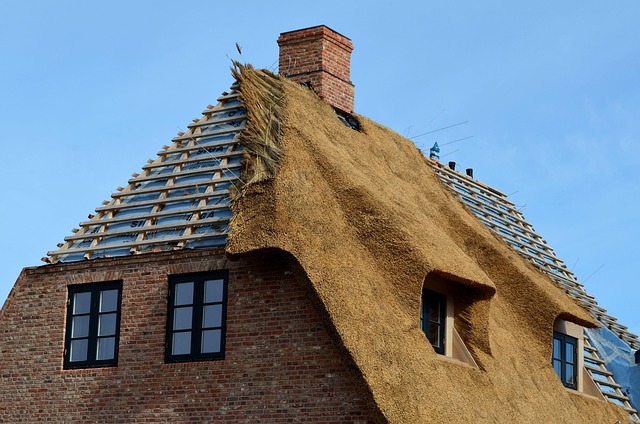Low slope roofing systems are ideal for flat or slightly inclined commercial surfaces, offering durability, low maintenance, and versatility. These systems, using materials like EPDM, TPO, or PVC membranes, extend building lifespans by safeguarding structural integrity. They are particularly suitable for warehouses and large spaces due to their load resistance, water tightness, and flexible design options. Regular maintenance and proper installation techniques ensure optimal performance, preventing water damage and enhancing energy efficiency. When choosing a provider, consider their expertise, experience, and comprehensive service offerings to ensure a functional, durable roof.
“In the world of industrial architecture, low slope roofing systems have emerged as a game-changer for warehouses and large commercial spaces. These shallow-pitched roofing solutions offer a range of benefits tailored to demanding environments. From enhancing structural efficiency to simplifying maintenance routines, low slope roofs are a popular choice for businesses seeking robust and cost-effective protection. This comprehensive guide explores the intricacies of these systems, from their defining features to the latest construction techniques, empowering you to make informed decisions regarding top-notch low slope roofing services.”
- Understanding Low Slope Roofing Systems: Definition and Key Features
- Common Applications: Warehouses and Large Commercial Spaces
- Advantages of Shallow-Pitch Roofs in Industrial Settings
- Materials and Construction Techniques for Efficient Low Slope Roofing
- Maintenance and Longevity: Ensuring Optimal Performance Over Time
- Choosing the Right Low Slope Roofing Service Provider
Understanding Low Slope Roofing Systems: Definition and Key Features

Low slope roofing systems are designed for flat or slightly inclined surfaces commonly found in warehouses and large commercial buildings. Unlike sloped roof designs that rely on gravity to shed water, low pitch roofs utilize a different set of principles for effective water management. These systems typically feature a membrane or a series of layers that create a waterproof barrier, making them ideal for environments where roof drainage systems play a crucial role in preventing water damage and structural issues.
The key features of low slope roofing services include their durability, low maintenance requirements, and versatility. They can be constructed using various materials such as EPDM (ethylene propylene diene monomer), TPO (thermoplastic olefin), or PVC (polyvinyl chloride) membranes, each offering unique advantages in terms of resistance to extreme weather conditions, UV exposure, and chemical compatibility. With proper installation and routine inspections, these roofing systems can extend the lifespan of commercial buildings, ensuring their structural integrity for years to come.
Common Applications: Warehouses and Large Commercial Spaces

Low slope roofing systems are the go-to choice for many warehouses and large commercial spaces due to their functional advantages. These structures often require roofing solutions that can withstand heavy loads, offer excellent water resistance, and provide long-term durability—all of which shallow-pitched roofs excel at delivering. The flat or gently sloping nature of these roofs allows for easier maintenance and repairs, as well as more versatile internal space utilisation.
In addition to their practical benefits, low slope roofing services also cater to specific design requirements. Commercial spaces often aim for sleek, modern aesthetics, and sloped roof designs can be tailored to incorporate contemporary lines and shapes while ensuring optimal structural integrity. Furthermore, efficient roof drainage systems are critical in these areas, and the low pitch roof design facilitates effective water flow, preventing potential damage from pooling or leaks.
Advantages of Shallow-Pitch Roofs in Industrial Settings

Shallow-pitched roofs, a prevalent feature in industrial buildings, offer several advantages tailored to the unique demands of large commercial spaces. One of the key benefits is their simplicity and cost-effectiveness in installation and maintenance. Unlike sloped roof designs, which can be complex and time-consuming to construct, low slope roofing systems are relatively straightforward, reducing construction costs. This makes them an attractive option for businesses aiming to minimise expenditure without compromising structural integrity.
Furthermore, these roofs provide efficient solutions for robust roof drainage systems. Their shallow pitch allows for the easy flow of rainwater, snow, and ice, preventing water accumulation and associated damage. Proper drainage is crucial in industrial settings where heavy loads and large areas require effective management of surface water to maintain structural stability and prevent leaks that could disrupt operations.
Materials and Construction Techniques for Efficient Low Slope Roofing

Low slope roofing systems, often found in warehouses and large commercial spaces, require specific materials and construction techniques to ensure efficiency and longevity. Key materials for such roofs include high-performance membranes designed to withstand prolonged exposure to extreme weather conditions, as well as lightweight insulation that maintains energy efficiency while reducing structural loads. These membranes are typically reinforced with layers of fabric or fleece for added durability and puncture resistance.
Construction involves precise layering: a solid substrate is prepared, followed by a layer of impermeable membrane, and then a system of roof drainage channels. The low pitch roof design incorporates these channels to effectively manage water flow, preventing ponding and minimizing the risk of leaks. Efficient installation practices, including detailed flashing and proper sealing at joints, further ensure the integrity of the roof. These techniques not only contribute to the structural integrity of the building but also play a vital role in long-term cost savings through reduced maintenance and improved energy efficiency.
Maintenance and Longevity: Ensuring Optimal Performance Over Time

Low slope roofing systems, while common in warehouses and large commercial spaces, require meticulous maintenance to ensure optimal performance over time. Unlike sloped roofs that rely on gravity for drainage, low pitch roofs necessitate effective roof drainage systems to prevent water damage and prolong the lifespan of the roofing material. Regular inspections are crucial to identify any signs of wear or leaks early on, allowing for prompt repairs that can save significant costs in the long run.
Proper maintenance involves more than just repairing leaks; it includes cleaning gutters, replacing missing or damaged shingles, and ensuring all flashing is secure. By investing in low slope roofing services, commercial property owners can ensure their buildings maintain a functional and attractive exterior. Additionally, regular upkeep can help preserve the structural integrity of the roof, preventing costly replacements and enhancing the overall efficiency of the building’s energy systems.
Choosing the Right Low Slope Roofing Service Provider

When selecting a low slope roofing service provider for your commercial space, it’s crucial to consider several factors. Start by evaluating their expertise and experience in handling low slope roofs, as this specific type of roofing requires specialized knowledge and techniques. Look for professionals who offer comprehensive services, from initial design consultation to installation, maintenance, and repairs. Ensure they are well-versed in sloped roof design and can provide solutions tailored to your building’s unique needs.
Additionally, pay close attention to their reputation and track record. Check online reviews and ask for references to gauge customer satisfaction levels. A reliable service provider should also be equipped with knowledge of the latest roofing technologies and materials, including efficient roof drainage systems, which are essential for low pitch roofs. This ensures your roof remains functional and durable over time.
